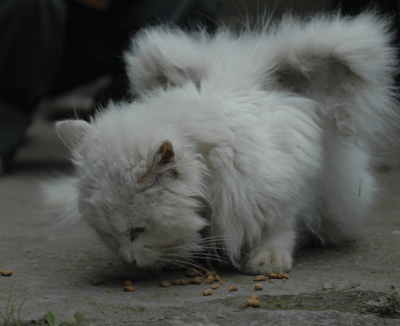 Matt Walker
Matt WalkerEditor, Earth News
Jaguars are one of the most elusive of large animals, reluctant to be filmed or tracked in their natural habitat.
But now biologists have finally managed to learn one of the big cat's secrets; how often it gives birth.
An ongoing study in Costa Rica, one of the last strongholds of the jaguar, has revealed that females in the wild give birth every 22 to 24 months.
Knowing the reproductive behaviour of the species will be vital information in helping to protect the species.
Numbers of jaguars, the third largest of all cat species and the largest in the New World, are declining.
The big cat is occasionally sighted in Arizona and New Mexico in the US, and populations remain within Mexico and south through Central America and into South America, including much of Amazonian Brazil.
But the species is listed as Near Threatened by the World Conservation Union.
If conservationists are to estimate how the last remaining populations of jaguar might grow, they need to know three things: how many cubs females have in each litter, how many of those cubs survive on average, and how often females give birth to new litters.
But most information about the reproductive habits of jaguars comes from observations in zoos, which may not reflect how jaguars reproduce in the wild. Even in captivity, researchers have been rarely able to document how often females give birth to new litters.
So Eduardo Carrillo and Joel Saenz of the National University in Heredia, Costa Rica and Todd Fuller of the University of Massachusetts, in Amherst, US embarked on an ongoing study of jaguars living in the Corcovado National Park in west Costa Rica.
The study began in 1990 after Carrillo saw a female jaguar walking with a single cub across a beach in the park during the day.
"At that time there were few jaguar studies and the lack of information was an important issue when making management decisions about jaguar conservation," says Carrillo. "So in 1994 we decided to radio mark jaguars. In 2003 we began using camera traps."
During the study, they found that jaguars in the park feed mainly on peccaries and marine turtles.
The diet surprised the biologists because an adult jaguar is capable of eating any animal that crosses its path, including people, though there is no record of a wild jaguar ever having attacked a person in the wild.
They also managed to follow a single female jaguar for three and a half years, by using the radio collar to triangulate her position and identifying her particular paw prints left in the mud.
In March one year, they saw the female being attended to by an adult male. By late May or early June she gave birth, and was seen accompanied by a single cub in July.
That cub remained with its mother for 19 to 20 months. Then some 22 months after she had first given birth, Carrillo noticed she was again pregnant, and was seen with a new cub a month or two later.
That confirms that wild jaguars seem to give birth once every 22 to 24 months, and that juvenile jaguars leave the company of their mother after 18 to 24 months, the team report in the journal Mammalian Biology.
Jaguars are thought to give birth to more than cub on average, though it is unclear how many usually survive until adulthood.
"One of the main questions about jaguars is their natural birthing habits," says Carrillo. "We have little knowledge about this until now."
However, despite the team's camera traps recording pictures of adult jaguars, the mothers are still proving protective of their offspring.
"We have pictures of pregnant females, but we have never taken a picture of a female jaguar with its cubs."
http://news.bbc.co.uk/earth/hi/earth_news/newsid_8074000/8074124.stm






























